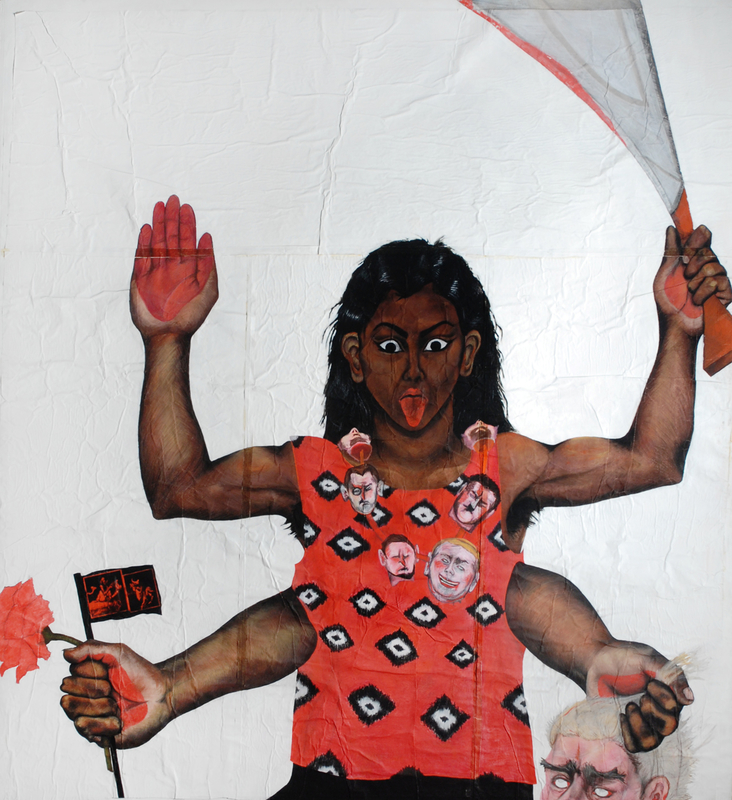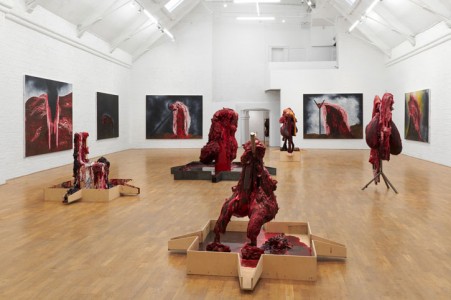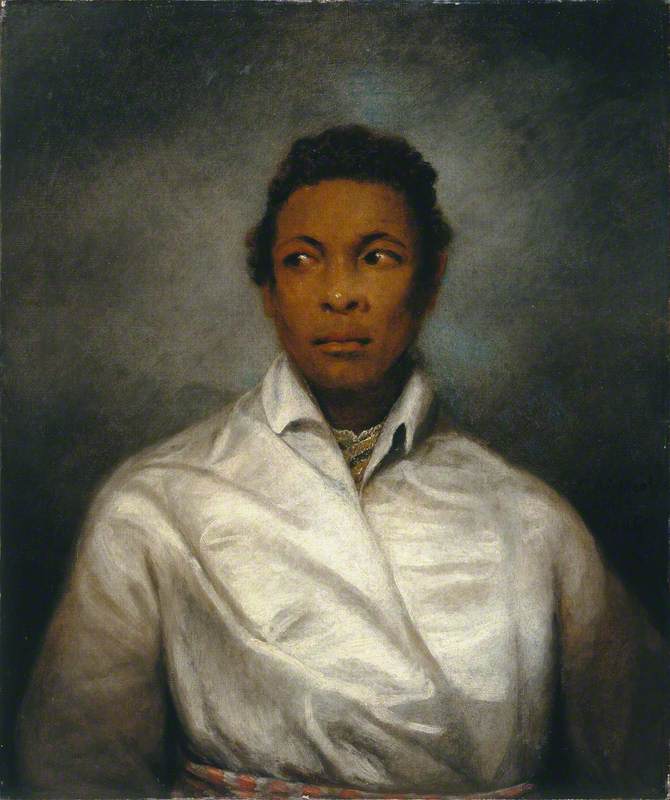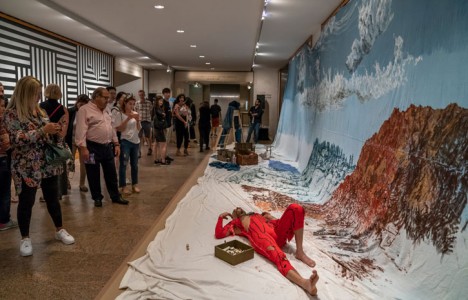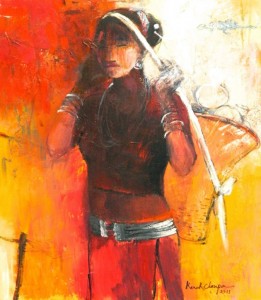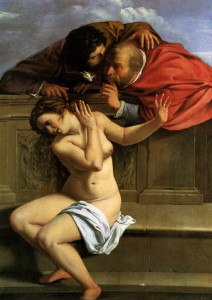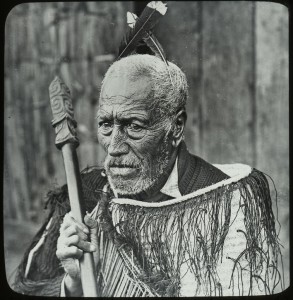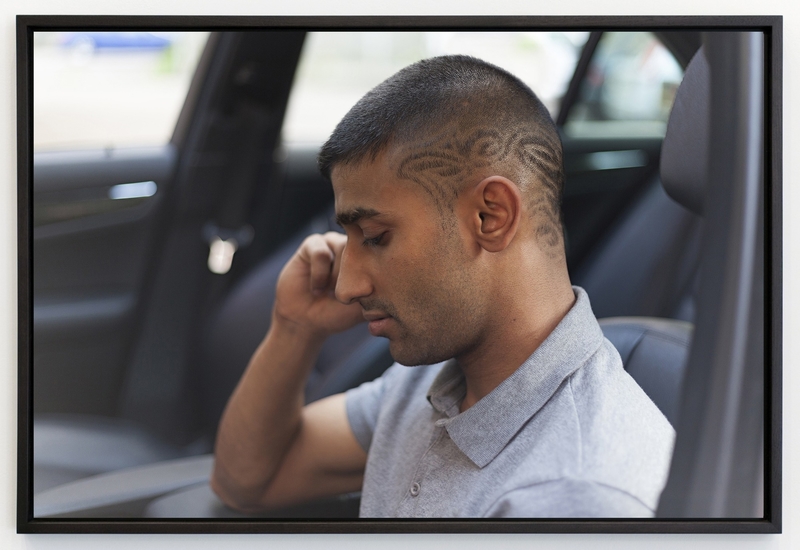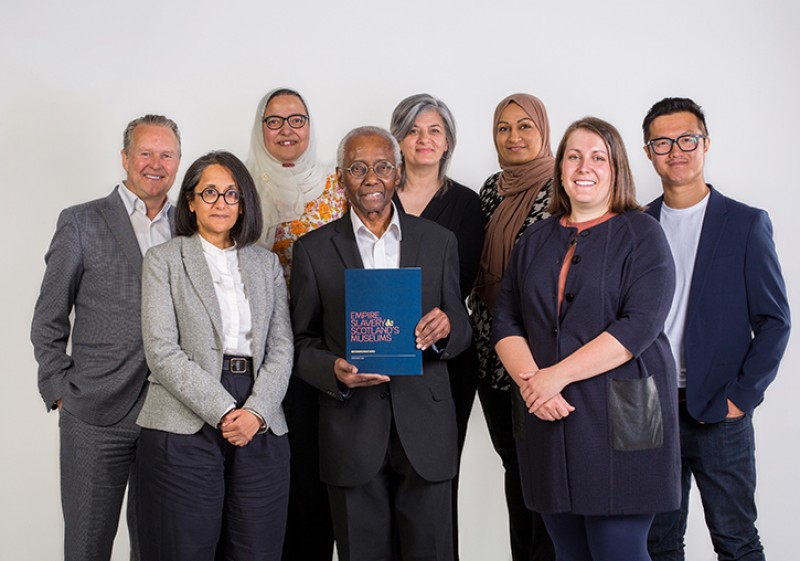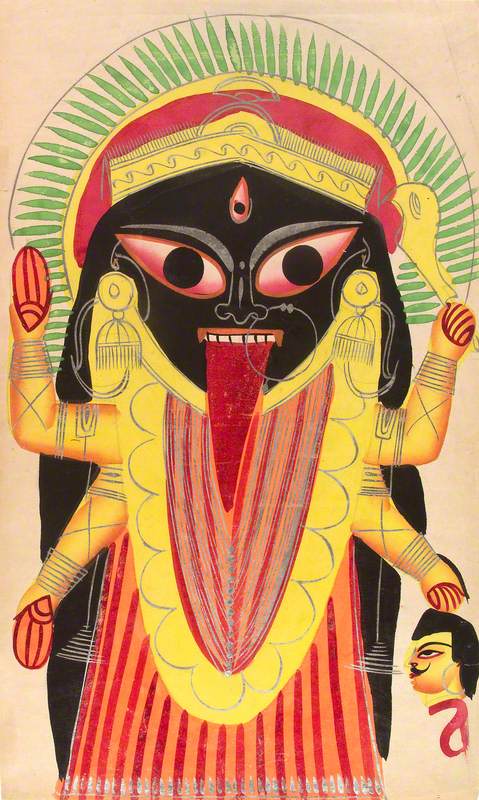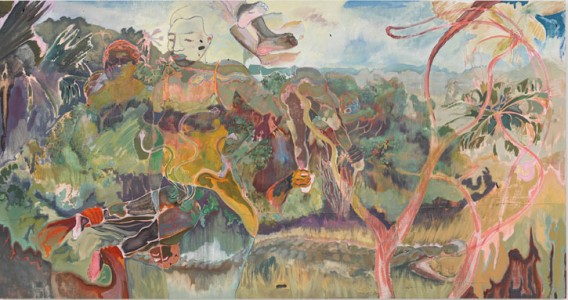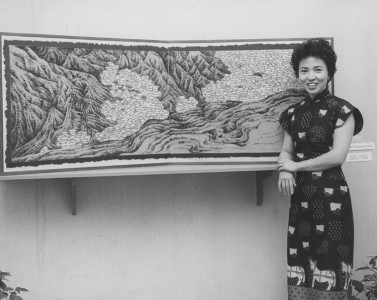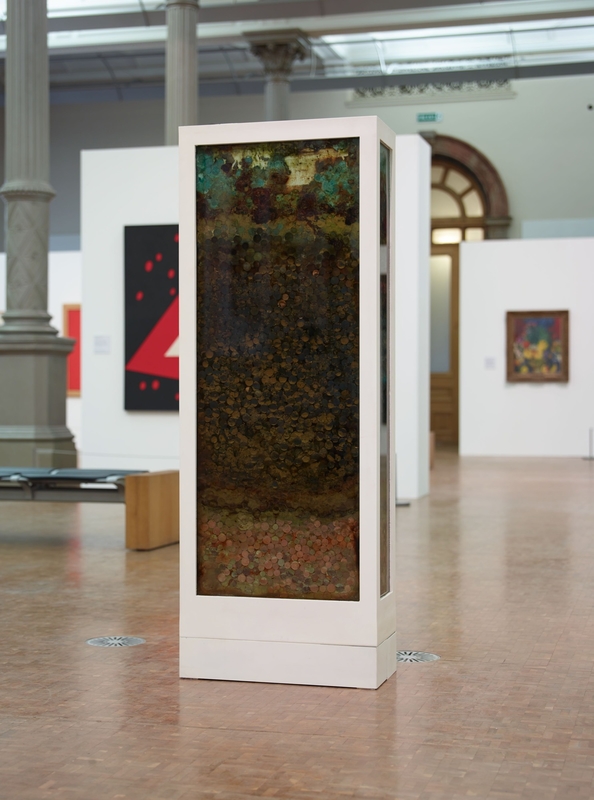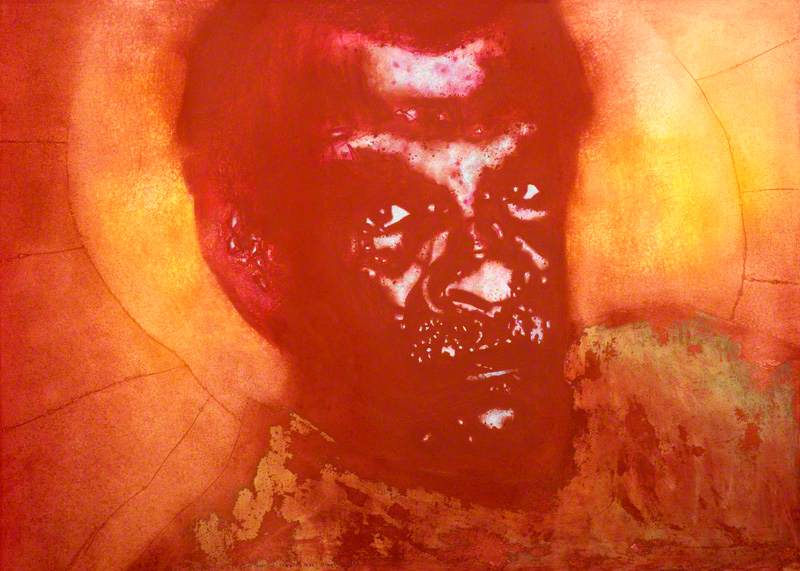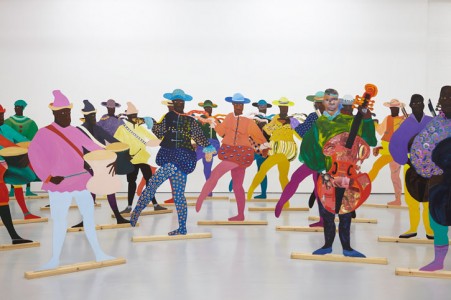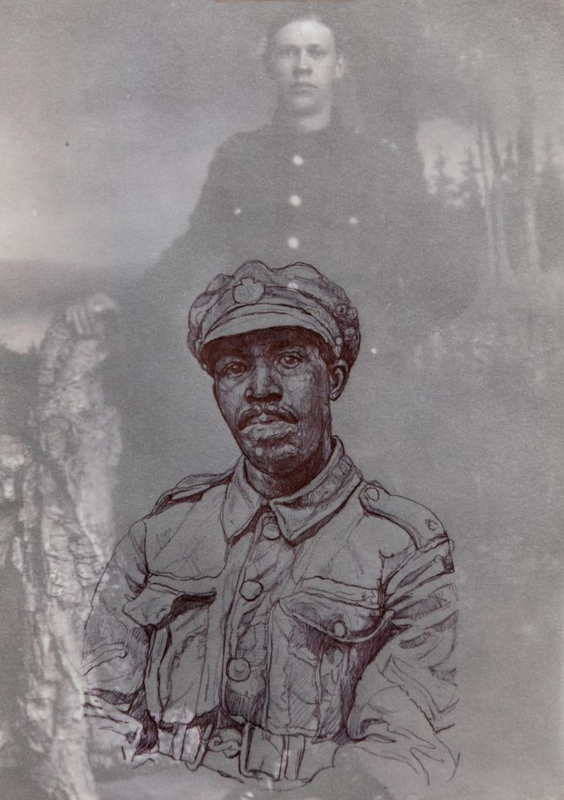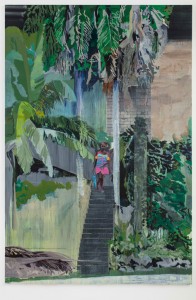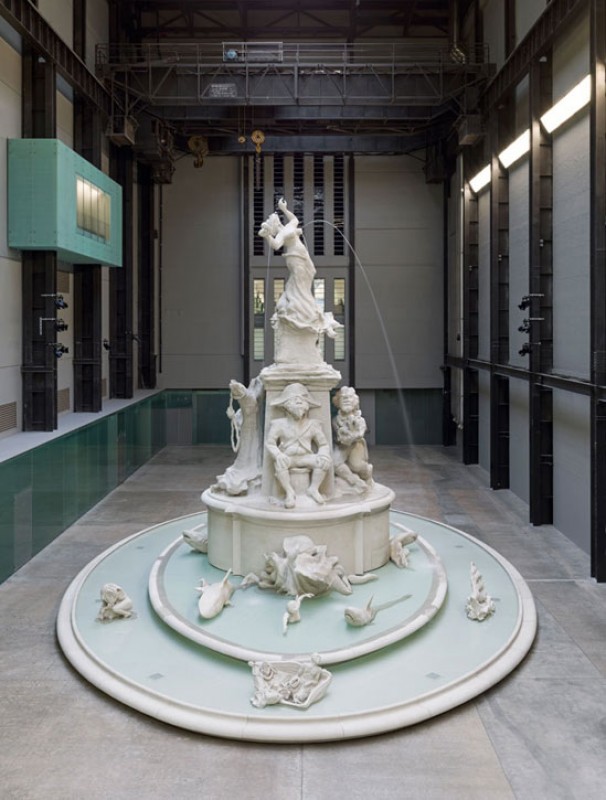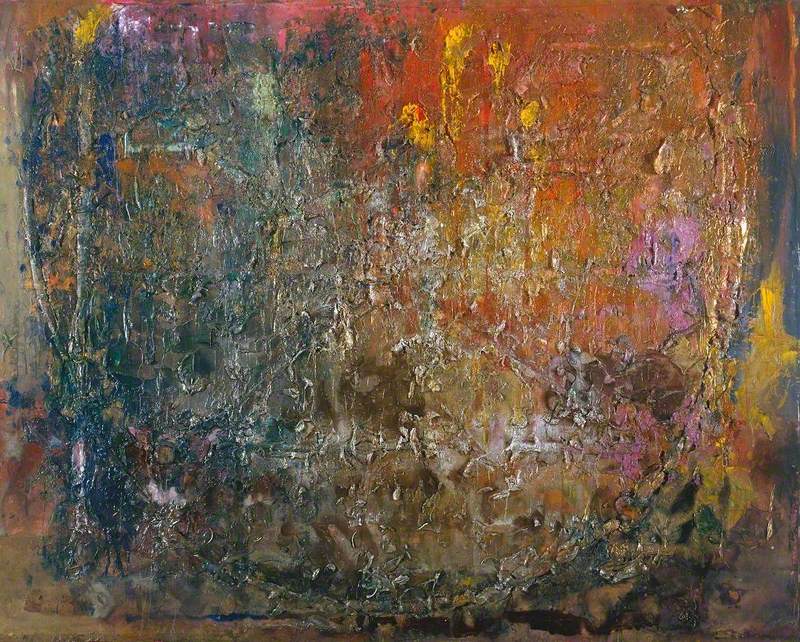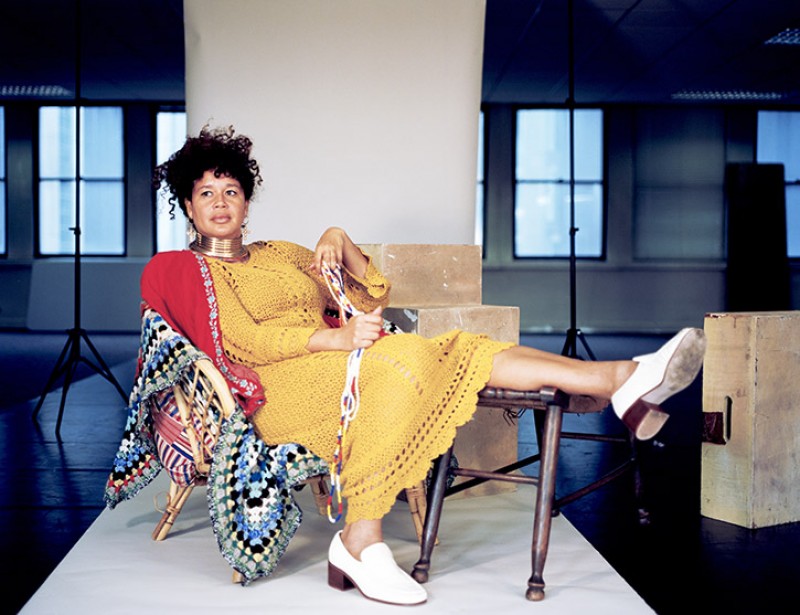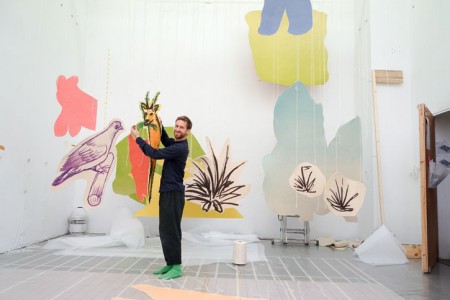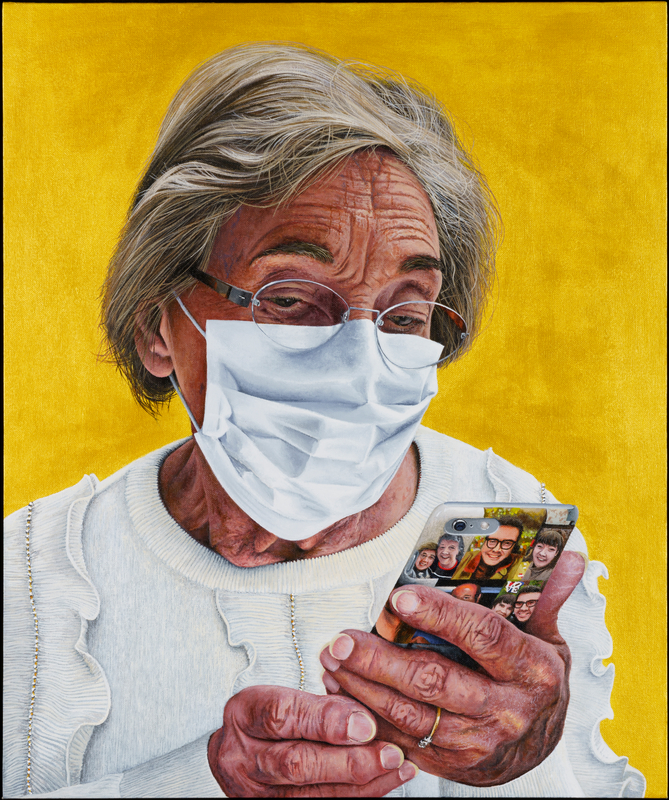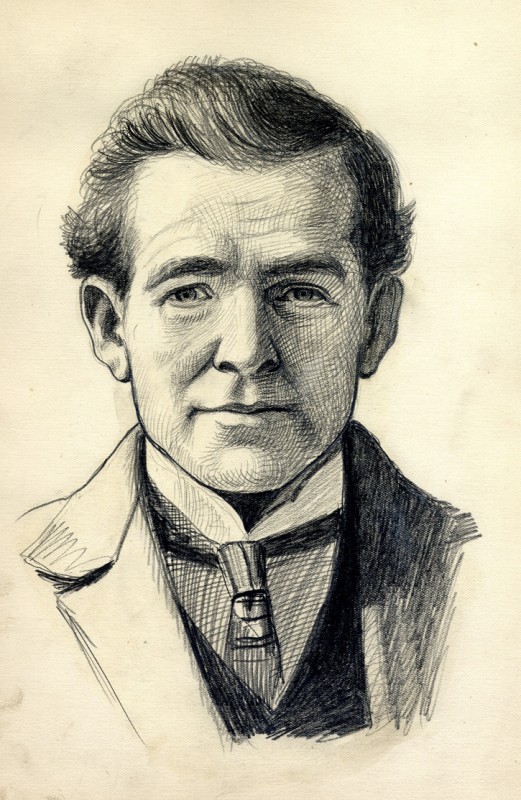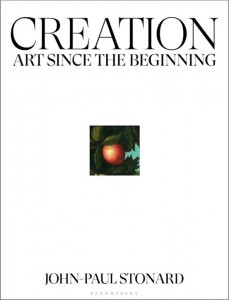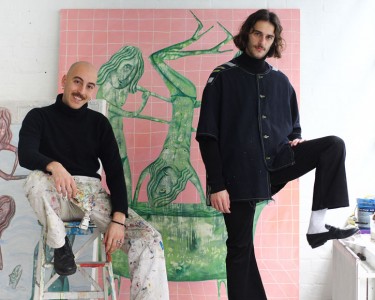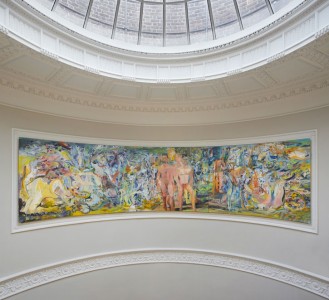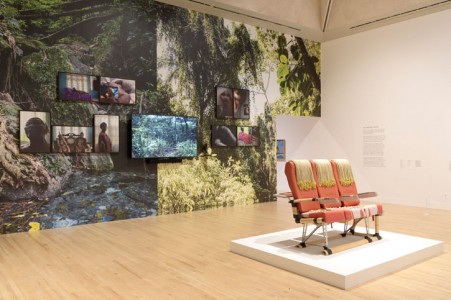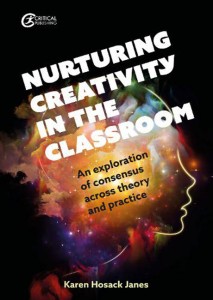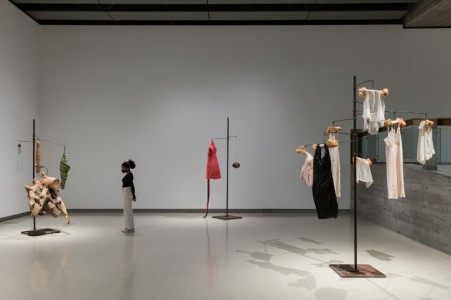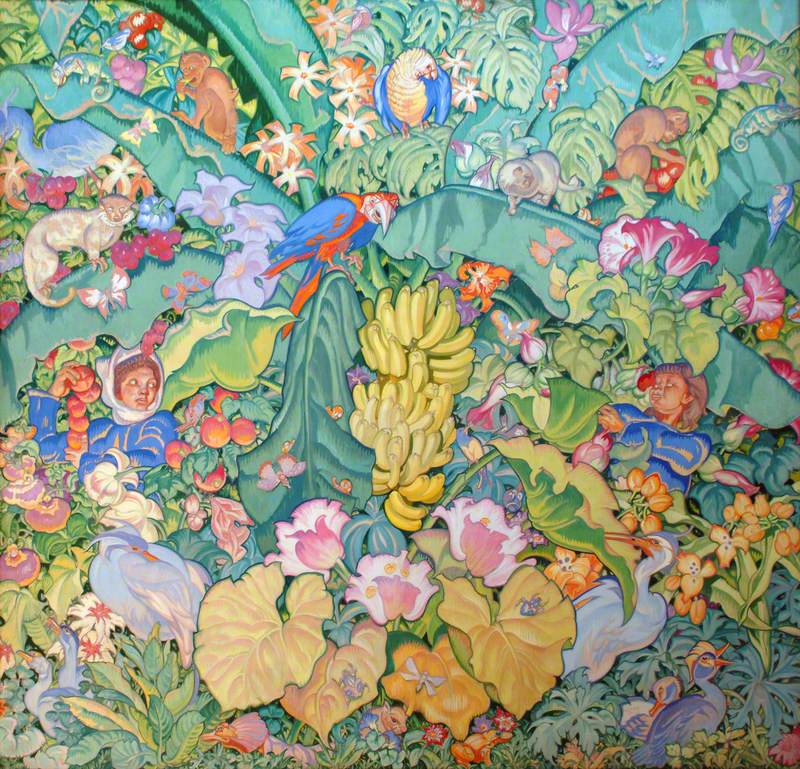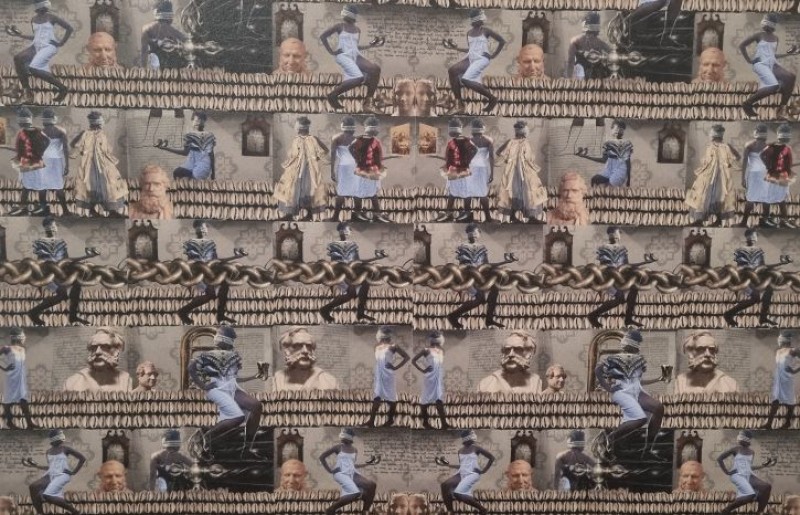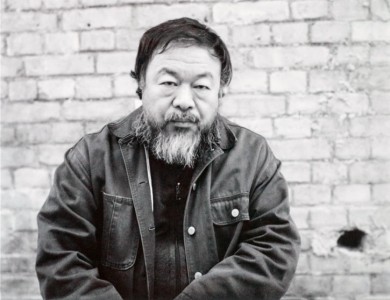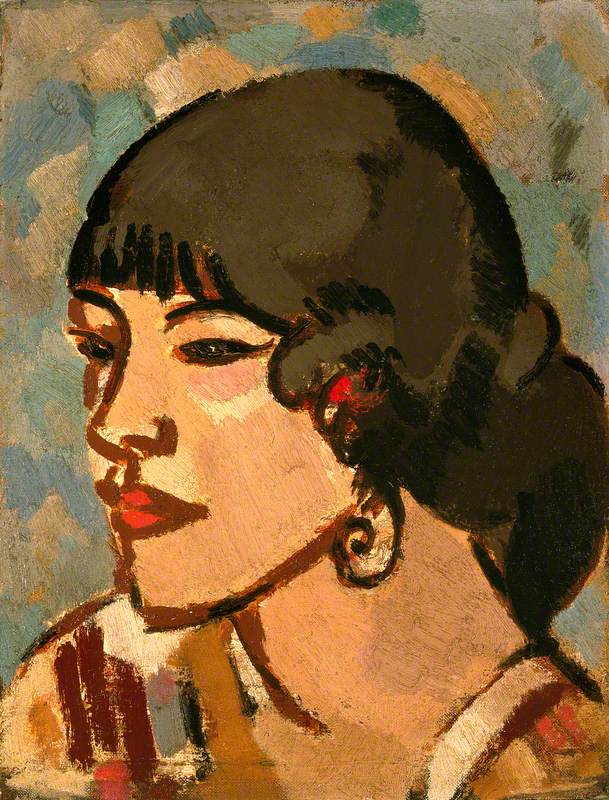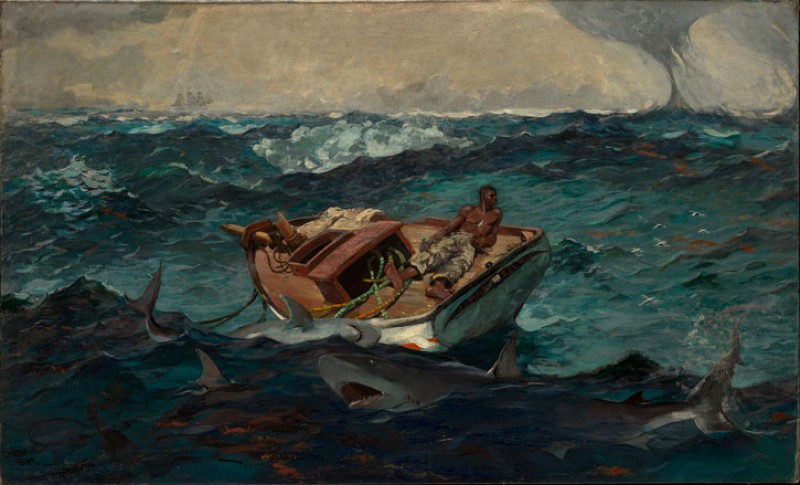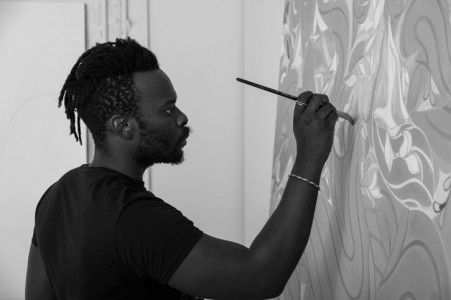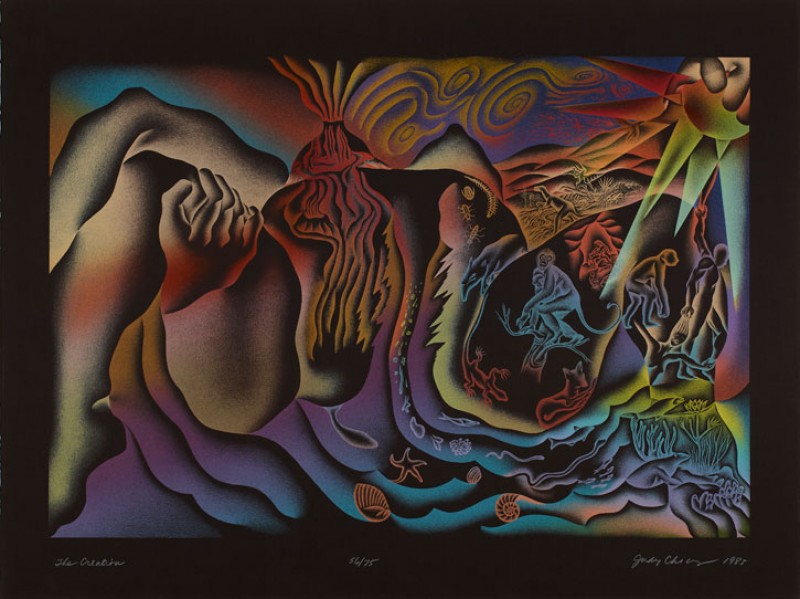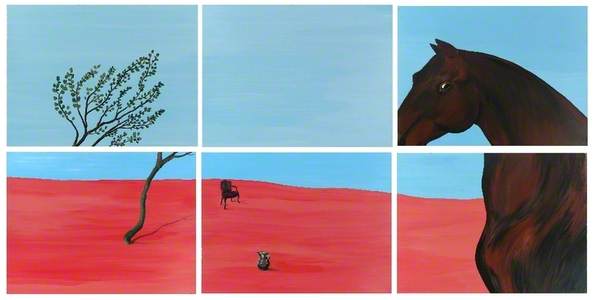In her first term as an art student at the University of Leeds in 1981, Sutapa Biswas asked her tutor, the feminist art historian Griselda Pollock, to change the content of the course.
This assertive challenge to Western-centric teaching of art history by the British-Indian artist has persisted throughout a four-decade career, in which she has consistently upended assumptions about art history.
Still of 'Lumen'
2021, single-channel digital video by Sutapa Biswas (b.1962) 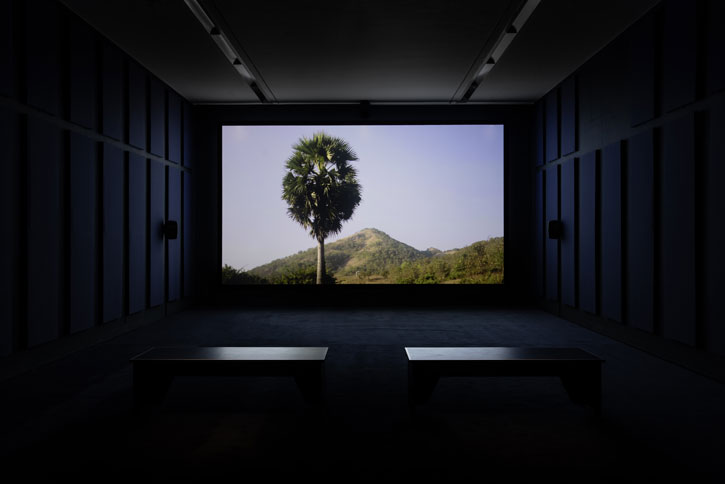
In her multimedia work that includes painting, film and performance, Biswas has also questioned ideas around race, gender and identity, often through a personal lens.
Two major exhibitions at the BALTIC Centre for Contemporary Art and Kettle's Yard, the first significant showing of her work since 2004, both seek to rectify her overlooked position in British art.
While at Leeds, Biswas created Housewives with Steak-Knives (1983–1985), a monumental self-portrait of the artist as the Hindu goddess Kali. Formed of several pieces of paper stuck together with masking tape and leaning forward from the wall, the work's powerful female figure resists stereotypical Western depictions of South Asian women.
By drawing on disparate cultural imagery, from the East and West, as well as her critique of the university syllabus, Biswas reframes the goddess, who wields a machete and holds a severed head, not unlike the portrayal found in Artemisia Gentileschi's Judith Beheading Holofernes (c.1620).
Giuditta che decapita Oloferne (Judith Beheading Holofernes)
1614–1620, oil on canvas by Artemisia Gentileschi (1593–1653 or after) 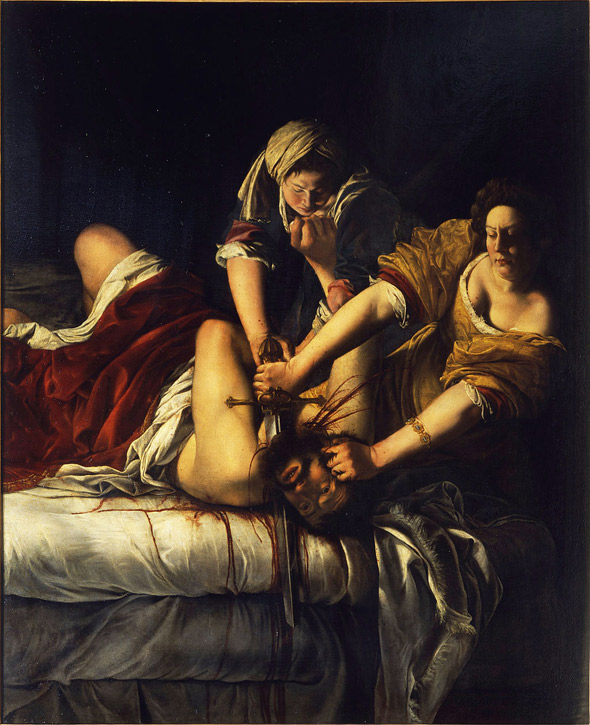
A photocopied image of Gentileschi's painting appears on the flag Kali holds, and which had also appeared in Pollock and Rozsika Parker's book Old Mistresses: Women, Art and Ideology. The subtle inclusion of this image allowed Biswas to further call out the absences she noticed within Eurocentric feminist readings of art history.
But situating this particular painting alongside references outside the Western canon also allowed Biswas to make a statement about female solidarity beyond borders, framed in the wider context of postcolonialism. A broader metaphor for whiteness is conjured through the work's white background, a deliberate nod to Robert Rauschenberg's White Paintings.
In tandem with Housewives, Biswas produced the video-performance piece Kali (1983–1985) – a work also filled with art historical references. In this work, she plays the goddess as well as the evil 'Raban', characters representative of East and West. Biswas made Pollock a central protagonist in the performance, sitting her in a chair and placing a hood over her head as a means of drawing attention to the art department's inattentiveness to the legacies of imperialism.
Still from 'Kali'
1983–1985, video transferred onto digital file by Sutapa Biswas (b.1962) 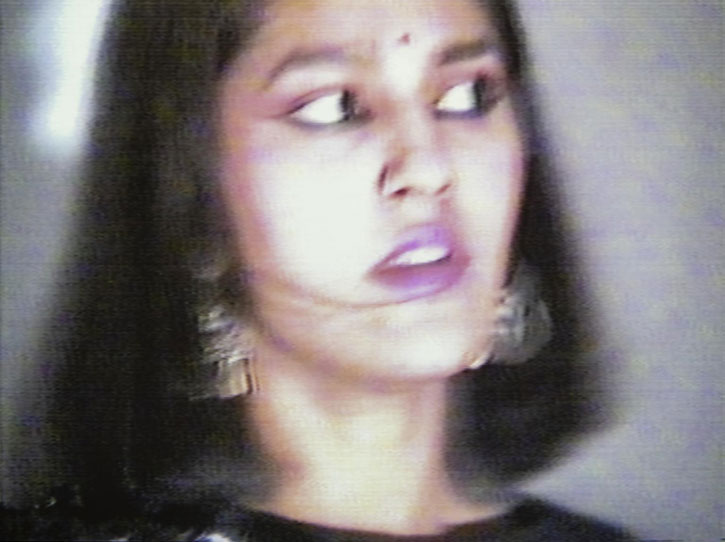
In an essay reprinted to accompany Biswas's current 'Lumen' exhibitions at BALTIC and Kettle's Yard, Pollock writes: 'It was her critique that forced us all to acknowledge the Eurocentric limits of the discourses within which we, the staff, practised.'
Both Housewives and Kali were included in the landmark exhibition 'The Thin Black Line', curated by Lubaina Himid for the ICA, London, in 1985. Like Himid, Biswas became a vital contributor to the Black Arts Movement, with artists challenging British art and fighting against anti-racist rhetoric against an explosive backdrop of Thatcherite politics, apartheid and Black feminism.
To counter the lack of formal opportunities to show their work, Black artists during the 1980s established a DIY approach to display, with many turning their hand to curating. In 1987, Biswas brought together the work of contemporary female artists for the exhibition 'Lines of Resistance'.
Still of 'Lumen'
2021, single-channel digital film by Sutapa Biswas (b.1962) 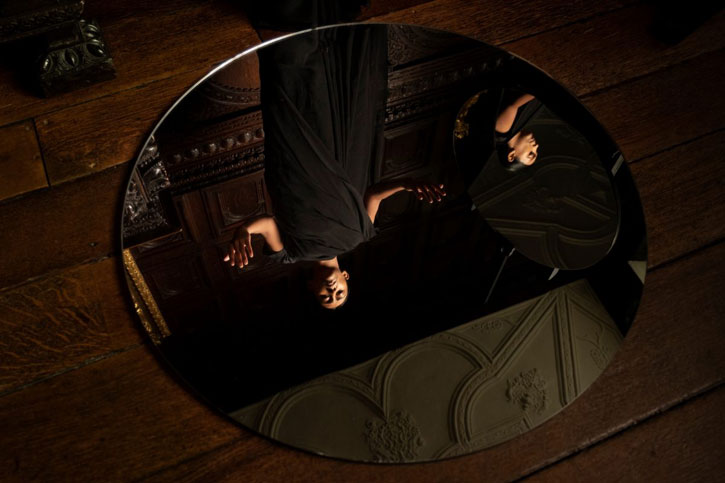
The artist's diptych created between 1985 and 1986, As I Stood, Listened and Watched, My Feelings Were This Woman is Not for Burning, encapsulates the immigrant experience amidst the tense political climate of the 1980s. Showing Biswas and her sister embracing in an act of both fear and defiance, the work was made in reaction to the artist being confronted by local fascists.
As I Stood, Listened and Watched, My Feelings Were This Woman is Not for Burning
1985–1986 by Sutapa Biswas (b.1962) 
Towards the end of the 1980s, Biswas returned to India for the first time since her childhood. In 1966, at the age of four, she left Shantiniketan, West Bengal, with her mother and four siblings. They travelled by sea to join her father – an outspoken academic Marxist – who had emigrated to the UK months earlier for political reasons, not least his resistance to the British Raj. This journey west amounted to a further dislocation for Biswas's parents, given that they had lived under British rule and then Partition. The artist has spoken about the hostility her family faced when they arrived in the UK.
Synapse II
1987–1991, photograph by Sutapa Biswas (b.1962) 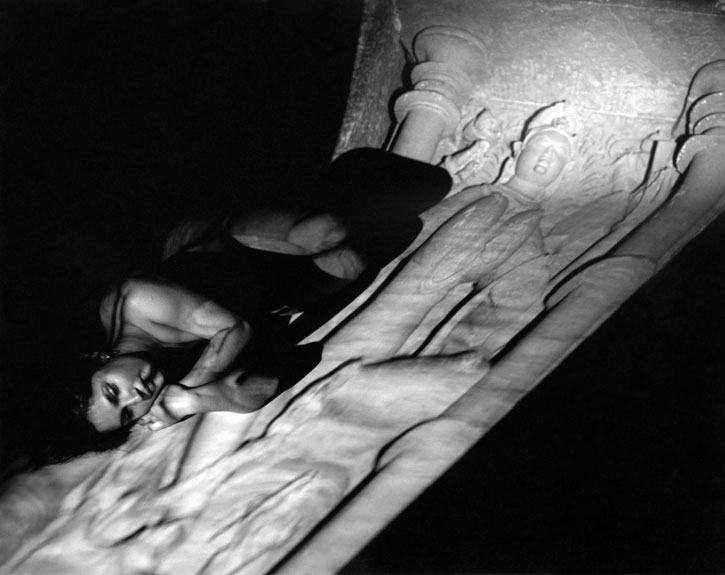
Her trip to India led Biswas to experiment with photography and develop works that interrogate the Western gaze while engaging more fully with ideas of memory and displacement.
In the series Synapse (1987–1992), Biswas projects images of erotic Hindu statues and monuments – taken while visiting India – onto her naked body. These large-scale black-and-white photographs reveal the 'Othered' body while also acting as sites of reclamation for the artist, a way of literally inserting herself into a space she no longer physically occupies.
This sense of liminal space, of being caught between one place and another, was also examined in the series Infestations of the Aorta – Shrine to a Distant Relative (1987–1989), shown at The Photographers' Gallery in 1989.
Much of Biswas's work has been concerned with centring female experience, including motherhood. Mata Ne (2015), a film made during a residency in Japan, documents women's stories about life, including the experience of giving birth, in the context of Japan's patriarchal culture.
Still of 'Mata Ne'
2015, single-channel digital video by Sutapa Biswas (b.1962) 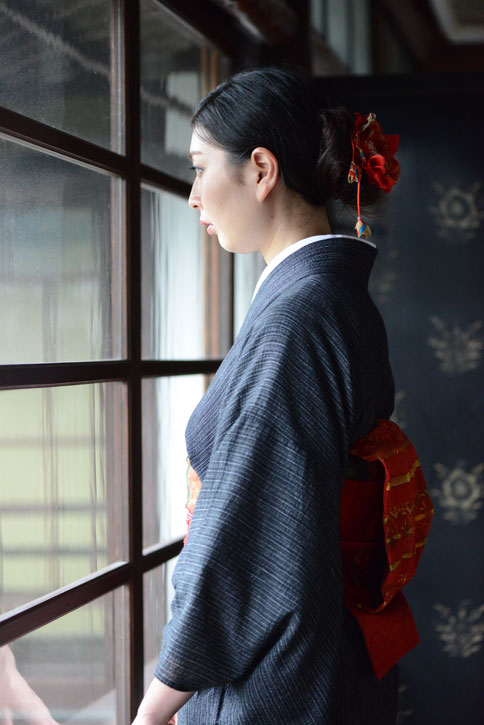
While her own personal history – especially the presence of strong women – informs much of her work, Biswas's own experience as a mother drives the poetic film Birdsong (2004). Featuring the artist's son, Enzo, the work takes as its starting point his first joined-up sentence, in which he said he wanted a horse to live with them.
Drawing on a painting by George Stubbs and the writings of Frantz Fanon, the film shows a horse situated in a well-dressed living room, gazed upon by Biswas's son who sits quietly on a sofa. Dissecting issues of desire and loss (both the loss of childhood innocence and of Biswas's father who was dying at the time), the film is a fantasy, albeit one that understands the very real legacies of power and Empire.
Still from 'Birdsong'
2004, single-channel digital film by Sutapa Biswas (b.1962) 
Despite the presence of a horse in the film, it is to birds that the title refers. This recalls a conversation between Biswas and her dying father where they agreed that birdsong would stand in for his voice. As curator Amy Tobin notes in the 'Lumen' catalogue, both horses and birds (with their migratory patterns) appear throughout Biswas's oeuvre – from the early painting Through Rose-Tinted Windows (1996) to the video Magnesium Bird (2004) and the watercolour series Time Flies (2004–ongoing), the latter two of which are meditations on the loss of her father and the passing of time.
Time is, in fact, a recurring theme in Biswas's work, as she seeks to bring together the past and present. Her films deliberately play with the very temporality of the medium itself, often by heightening the sense that time is being slowed down, as in Birdsong (which also includes a jarring, slightly out-of-sync split screen). More broadly, time in Biswas's work functions as emblematic of the diasporic experience, of being physically in one space but psychologically in another.
Still from 'Lumen'
2021, single-channel digital film by Sutapa Biswas (b.1962) 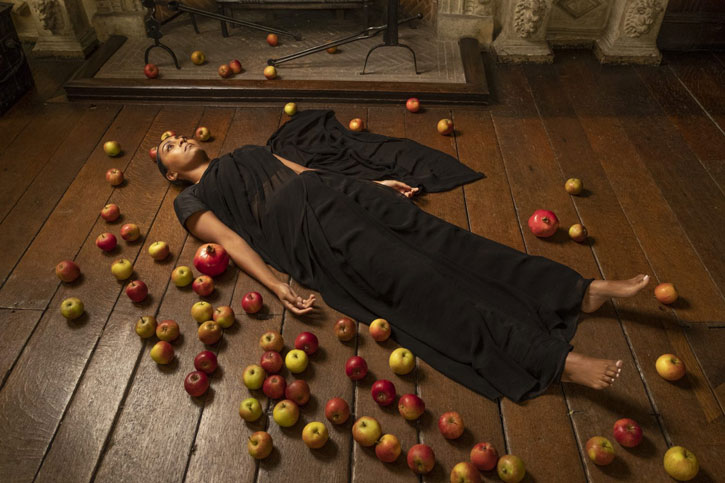
At the centre of the exhibitions at BALTIC and Kettle's Yard is a new semi-fictional film, Lumen (2020–2021), which unites many of the thematic threads Biswas has explored throughout her career. A film about family, memory and migration, it traces the artist's journey from Bengal and the trauma inherent in being so unmoored.
Imagining her mother's experience of travelling by sea with small children, as well as her grandmother's experiences, this personal – matrilineal – history is juxtaposed with other global maritime histories. Alongside a scripted monologue and film shot in India is archival footage from the British Empire.
Sutapa Biswas in front of 'Time Flies' at BALTIC Centre for Contemporary Art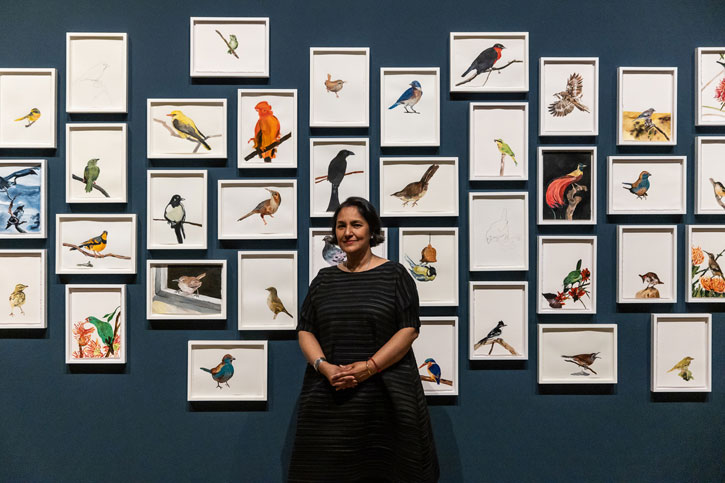
If the word 'lumen' speaks to ideas of light and hope, then it is apt for describing the work of Biswas which has consistently sought to make visible the invisible. In light of today's attempts to decolonise art history and to rethink the role of Empire in our museums, Biswas's dissection of colonial histories feels more urgent than ever.
Imelda Barnard, freelance writer and editor
'Sutapa Biswas: Lumen' is at BALTIC Centre for Contemporary Art, Gateshead until 20th March 2022 and 'Sutapa Biswas: Lumen' is at Kettle's Yard, Cambridge until 30th January 2022.
